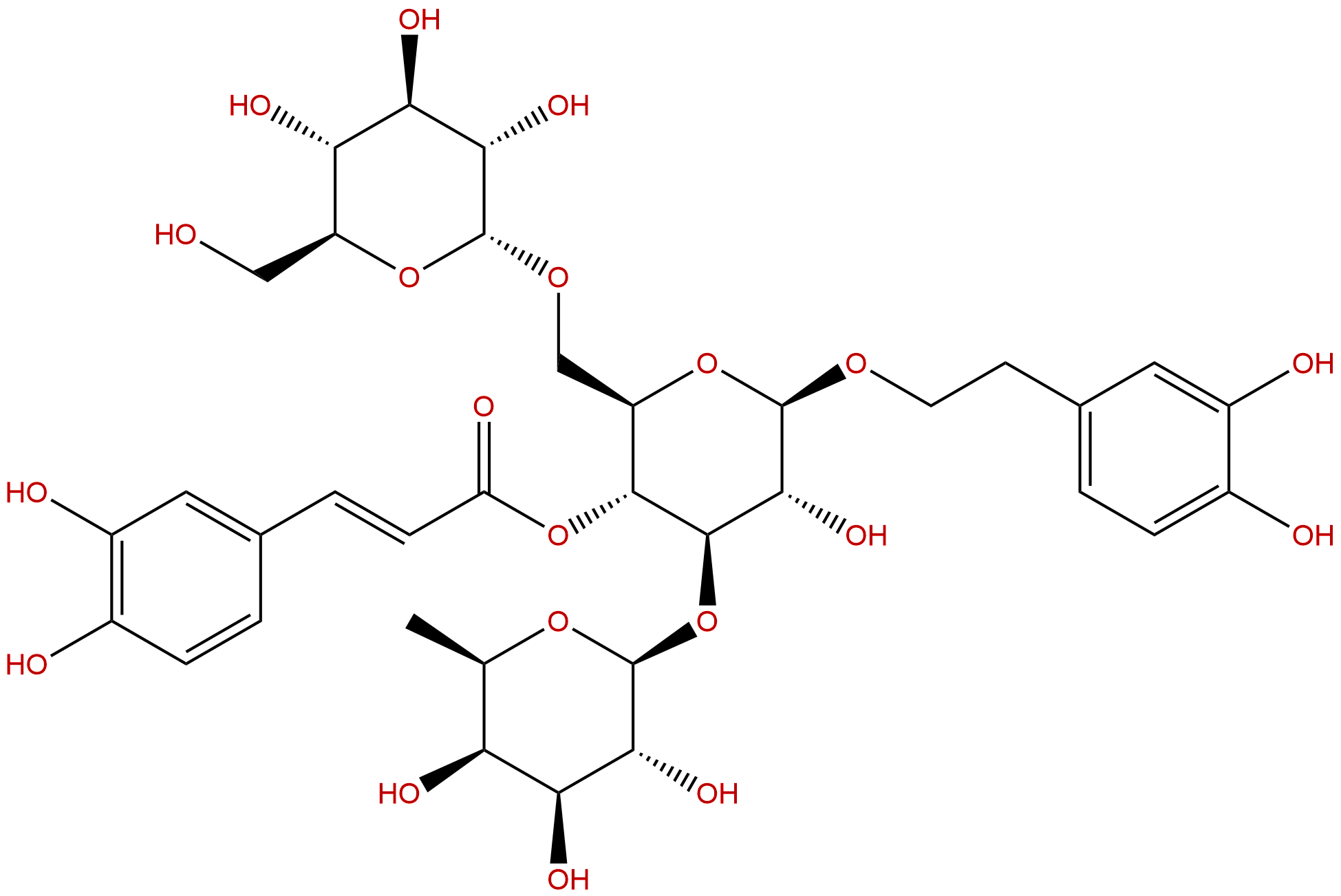
Purpureaside CCAS No.:108648-07-3
|
||||||||||
 |
|
|
||||||||

| Catalogue No.: | BP1765 |
| Formula: | C35H46O20 |
| Mol Weight: | 786.733 |
Product name: Purpureaside C
Synonym name:
Catalogue No.: BP1765
Cas No.: 108648-07-3
Formula: C35H46O20
Mol Weight: 786.733
Botanical Source: Rehmannia glutinosa
Physical Description:
Type of Compound:
Purity: 95%~99%
Analysis Method: HPLC-DAD or/and HPLC-ELSD
Identification Method: Mass, NMR
Packing: Brown vial or HDPE plastic bottle
The product could be supplied from milligrams to grams. Inquire for bulk scale.
We provide solution to improve the water-solubility of compounds, thereby facilitating the variety of activity tests and clinic uses.
For Reference Standard and R&D, Not for Human Use Directly.
Description:
Purpureaside C has significant proinflammatory, antimicrobial and immunomodulating effects.
References:
Acta Microbiol. Hung., 1989, 36(4):425-32.
Antimicrobial and immunomodulating effects of some phenolic glycosides.
METHODS AND RESULTS:
Several phenolic glycosides, i.e. acteoside, desrhamnosyl acteoside, and purpureaside A, B and C, exerted weak antibacterial effects on Escherichia coli. Acteoside had antiplasmid effects, including F'lac plasmid elimination, and inhibited kanamycin resistance transfer in E. coli. Acteoside, desrhamnosyl acteoside and purpureaside A displayed antiviral effect on Aujeszky virus. All of the phenolic glycosides decreased some human leucocyte functions, including rosette formation, mitogen-induced blast transformation and phagocytic activity in vitro. The Purpureaside C had significant proinflammatory action, however, other phenolic glycosides showed neither proinflammatory nor antiinflammatory effect on carrageenin-induced inflammation in vivo.